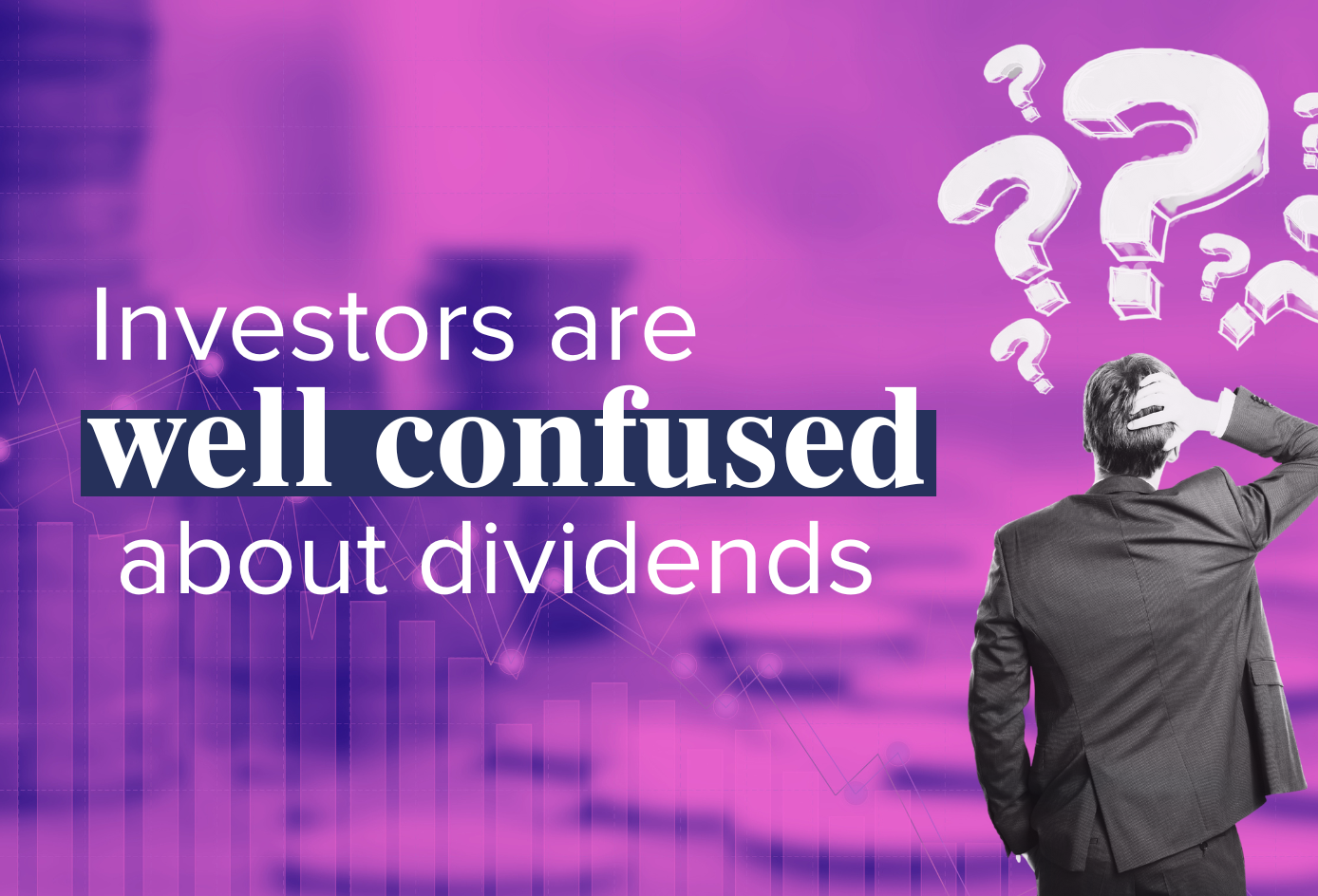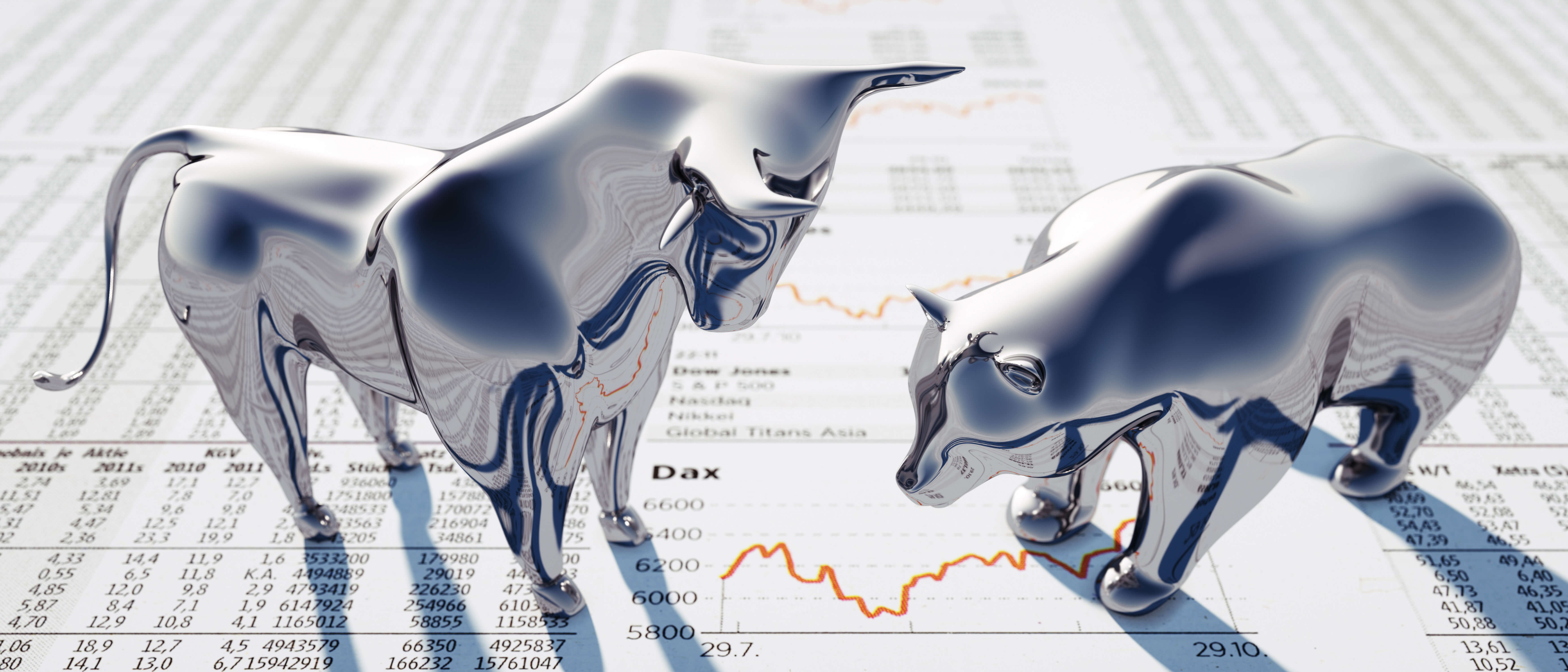Let’s face it, we all like the idea of free money. Some will recall the excitement of learning they were in line for a windfall by having a few pounds saved with a building society that was about to demutualise. Then came PPI compensation payments for loans you couldn’t remember taking out. Personally, just finding a pound coin left in a supermarket trolley can put a spring in my step all day.
The investing equivalent is the dividend payment, except there’s an important difference between dividends and the windfalls mentioned above: they don’t actually make us any better off.
Let’s back up for a moment. I’m not saying dividends aren’t important. On the contrary, they’re an integral part, along with capital appreciation, of an investor’s total return. But it’s a complete fallacy that dividends are effectively free money. Indeed there’s a name for this phenomenon in financial academic circles — the free dividend fallacy.
One hand gives, the other takes away
Simply put, if a company you own pays a dividend, the price of the stock drops by the amount of the dividend. In other words, dividends are not a free handout from a company to its shareholders — they directly affect the overall value of the firm.
The extraordinary thing is quite how enduring this misconception has been. Academics Merton Miller and Franco Modigliani addressed it as long ago as 1961, in their seminal paper on dividend policy, which introduced what is now known as the Miller-Modigliani (M-M) dividend irrelevance theorem. (1)
The theorem states that the value of a firm is determined by its earnings power and its investment decisions, and not by how these earnings are distributed. According to Miller and Modigliani, in a perfect market (in other words, with no taxes, transaction costs, or asymmetric information), it should not make any difference to a company’s overall value whether it pays out earnings as dividends or retains and reinvests that money instead.
There may be logical reasons, Miller and Modigliani argued, why investors should favour stocks that pay high dividends. For example, they may interpret an increase in dividends as a signal that the company’s management expects strong future earnings. Also, some theories suggest that dividends limit the potential for inefficient expenditure and therefore increase a firm’s profitability.
Irrational investor preferences
Subsequent research to Miller and Modigliani’s, however, has tended to emphasise the role of irrational investor preferences. After all, if it makes little or no difference whether firms pay out earnings as dividends or retain them, why do so many investors still favour companies that pay the highest dividends, or have the potential to increase dividend payments over time? And why are funds that invest in those stocks so popular? The question is particularly pertinent given that investors in the UK, and in most other countries, generally pay higher taxes on dividends than on capital gains.
One suggestion is that some investors perceive dividends as a form of steady income. But again, this is illogical reasoning, especially if it means having to pay more tax.
As Miller and Modigliani pointed out in their 1961 paper, investors can, if they want to, tailor their own dividend policies to suit their individual preferences, without relying on the company’s dividend policy decisions.
So if an investor prefers a higher cash flow than the dividends that are being paid out by the company, they can simply sell a portion of their shares to generate the desired cash flow. On the other hand, if an investor prefers to reinvest the dividends, they can use the dividend payments to buy more shares. Miller and Modigliani referred to these as “home-made dividends”.
The role of ignorance
The other possible reason why the preference for high-dividend-paying shares persists is, to put it bluntly, investors’ ignorance.
I recently interviewed Sam Hartzmark, Professor of Finance at Boston College in the US, co-author with David Solomon of a 2017 paper called The Dividend Disconnect. (2) Seven years on he still strongly believes that ignorance is the most plausible explanation.
“Some investors really, really want those dividend payouts,” Hartzmark told me, “and I think that is what most people are doing when they buy stocks with really high dividend payouts. That's simply logically incoherent.
“For most investors, you should probably not want to receive a dividend payout because there’s a bit more of a tax hit. But many investors just aren’t paying attention, and they never realize they are making a mistake, so they just keep on doing it, ignorant all the way.”
For Hartzmark, the strongest argument for reinvesting dividends is not paying less tax but the power of compound returns.
“If you've got a 2% dividend yield, maybe 5% versus 7% performance doesn’t sound huge for a given year,” he says. “But over, say , 40 years of investing, you’re going to end up with a massively bigger number if you reinvest that amount.
“If you are consuming the dividend not because you need money, but because you view it as house money, as if you’ve won the lottery, you are missing out on that extra performance.”
A silver lining
For investors who have specifically targeted dividend growth in the past, there may be a silver lining. In a recent article for Morningstar, the investment analyst and author Larry Swedroe explained that dividend-growth strategies are essentially quality strategies. (3) “The good news about the quality factor is that the premium (about 4.8% a year since 1958) has been persistent and pervasive around the globe,” he wrote.
But Swedroe also issued a warning for those who expect that outperformance to continue: “There are no generally accepted, logical, risk-based explanations for the quality premium because quality stocks are, by definition, safer investments. And safer investments should have lower returns.
“A focus on dividends,” Swedroe concluded, “is not likely to add value.”
Dividends aren’t special
So, the next time you read an article about a fund that invests in firms that pay high dividends, remember that dividends are nothing special — they’re just a return of capital.
Automatically reinvesting any dividends you receive is, generally speaking, a better policy than taking your dividends as cash. And don’t let anyone tell you that they are somehow free money.
This article is produced by us for Financial Advisers who may choose to share it with their clients. Timeline Planning and Timeline Portfolios do not offer direct-to-consumer products.
Robin Powell is a journalist, author and editor of The Evidence-Based Investor.
References:
- https://www.jstor.org/stable/2351143?seq=1#page_scan_tab_contents
- https://onlinelibrary.wiley.com/doi/10.1111/jofi.12785#:~:text=Citing%20Literature-,ABSTRACT,changes%20instead%20of%20total%20returns.
- https://www.morningstar.co.uk/uk/news/248201/there-is-nothing-special-about-dividends.aspx#:~:text=Investor%20Takeaways&text=Second,%20investors%20are%20better%20served,authored%2020%20books%20on%20investing.

.png)
.png)
